Lion Conservation in Africa: AWF’s Science-Driven Approach Across Landscapes
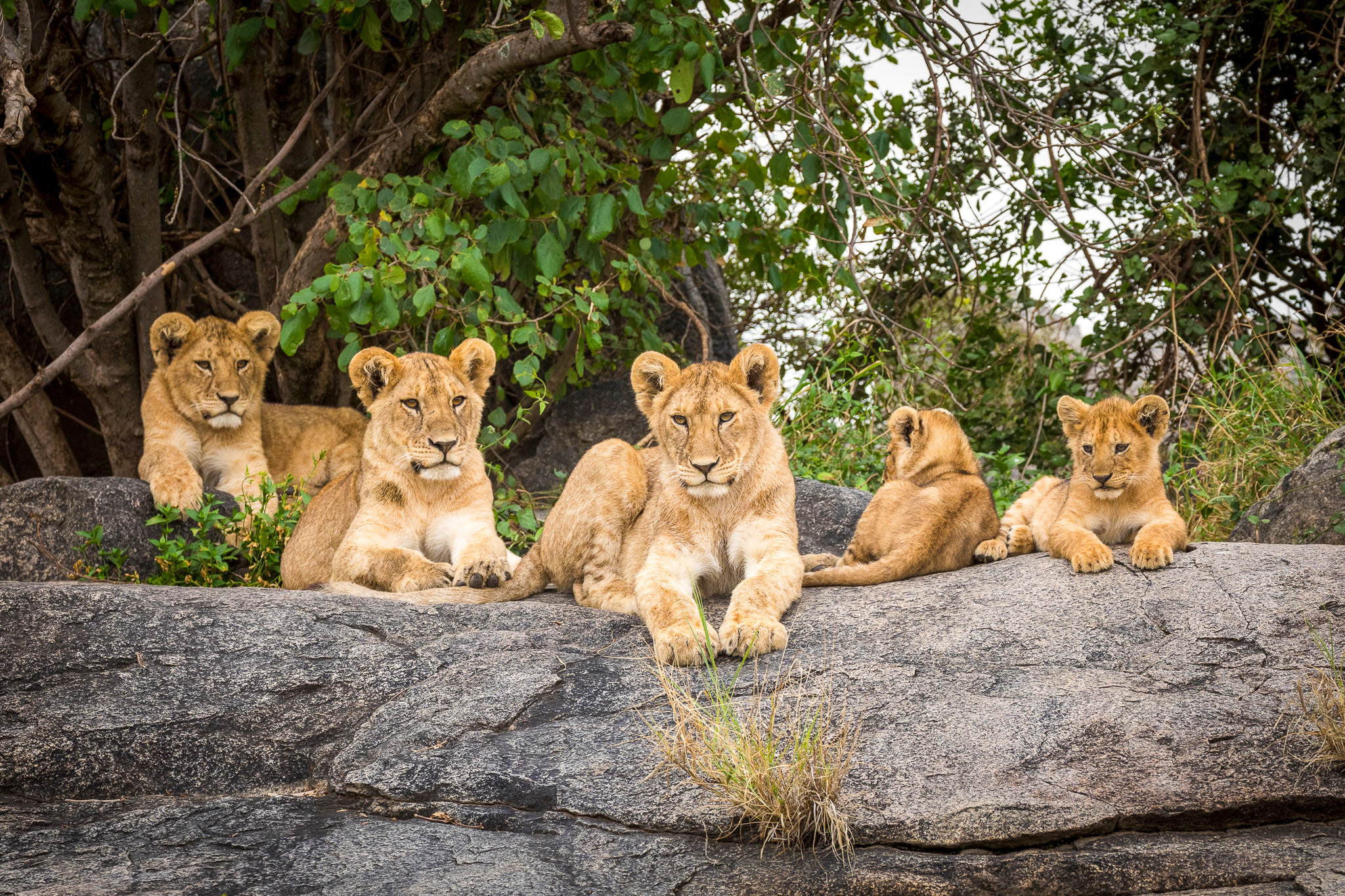
Lion cubs lying on rocks in Serengeti in Tanzania
In celebration of World Lion Day, we sat down with Dr. Nakedi Maputla, a Senior Conservation Scientist at African Wildlife Foundation (AWF), to discuss why lions remain a symbol of Africa’s wild heart—and how we can ensure their survival. With years of experience leading carnivore conservation across southern and eastern Africa, Dr. Maputla shares insights into the science, strategy, and collaboration needed to protect lions while supporting local communities.
What is the current status of Africa’s lion populations across AWF landscapes, and how is AWF using scientific monitoring to understand population trends, habitat use, and threats over time?
Lions are found in five AWF priority landscapes: Faro (Cameroon), Bili-Uele (DRC), Kidepo (Uganda), Tsavo-Mkomazi (Kenya), and the Mid-Zambezi Valley (Zimbabwe). However, AWF’s active lion conservation efforts are concentrated in Tsavo-Mkomazi and Mid-Zambezi, where focused programs are underway.
In West and Central Africa, the lions belong to the Panthera leo leo subspecies, critically endangered in West Africa. While AWF does not run dedicated lion programs in these regions, it works to secure critical habitats and recover prey species in partnership with local communities and protected area authorities. Faro currently supports an estimated 250 lions, while the status in Bili remains unclear due to persistent regional insecurity.
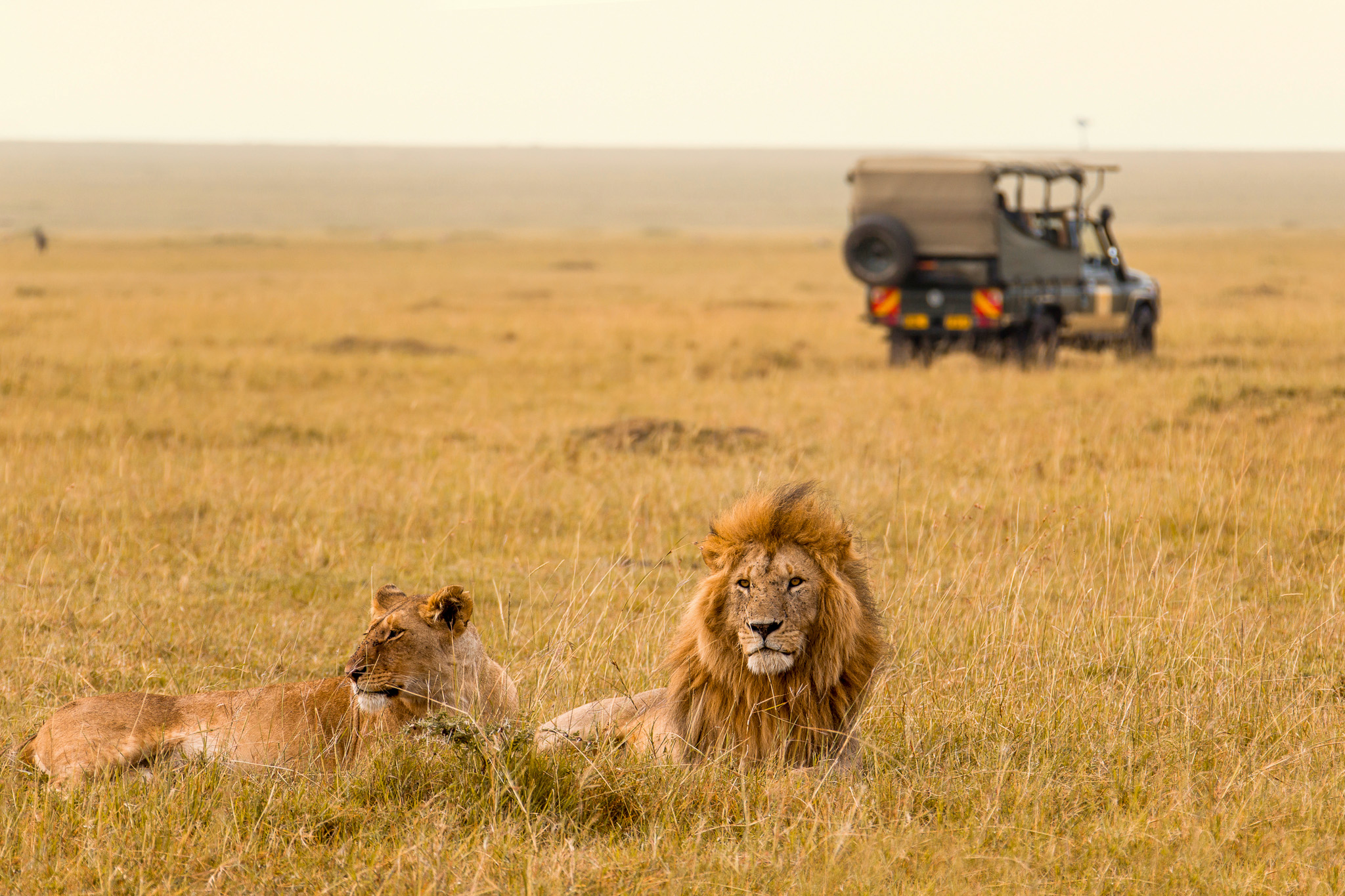
African lion couple and safari jeep in Kenya
In East and Southern Africa, AWF focuses on the Panthera leo melanochaita subspecies. In Tsavo-Mkomazi, AWF collaborates with the University of Wyoming through a PhD-led program that includes lion collaring, camera traps, radio collars, distance sampling, and DNA barcoding of meat to investigate the bushmeat trade.
Conservation strategies also involve land-use planning, anti-poaching patrols, and community outreach in conservancies like LUMO and Kasigau Ranch. The region hosts approximately 459 lions, though with a low density of fewer than two lions per 100 km².
In the Mid-Zambezi Valley, AWF partners with Wildlife Conservation Action and the Mbire District Government to reduce human-lion conflict. Solutions include better livestock management, community training, and predator deterrents such as lion lights. The area supports about 212 lions with a relatively stable population, though retaliatory killings remain a major concern.
In Kidepo National Park, Uganda, lion populations have drastically declined due to habitat degradation and widespread snaring. Numbers dropped from 132 lions in 2010 to fewer than 10 today, underscoring the urgency of action.
How does AWF’s lion conservation approach adapt across different regions?
AWF uses a landscape-specific approach tailored to the ecological, cultural, and governance contexts of each region. In West Africa, where lions are critically endangered, AWF emphasizes habitat and prey restoration and partnerships with local stakeholders. In East and Southern Africa, where populations are more stable, AWF works closely with communities to reduce human-wildlife conflict and promote coexistence. This adaptive strategy highlights the importance of place-based conservation models that respond to each region’s unique challenges and opportunities.
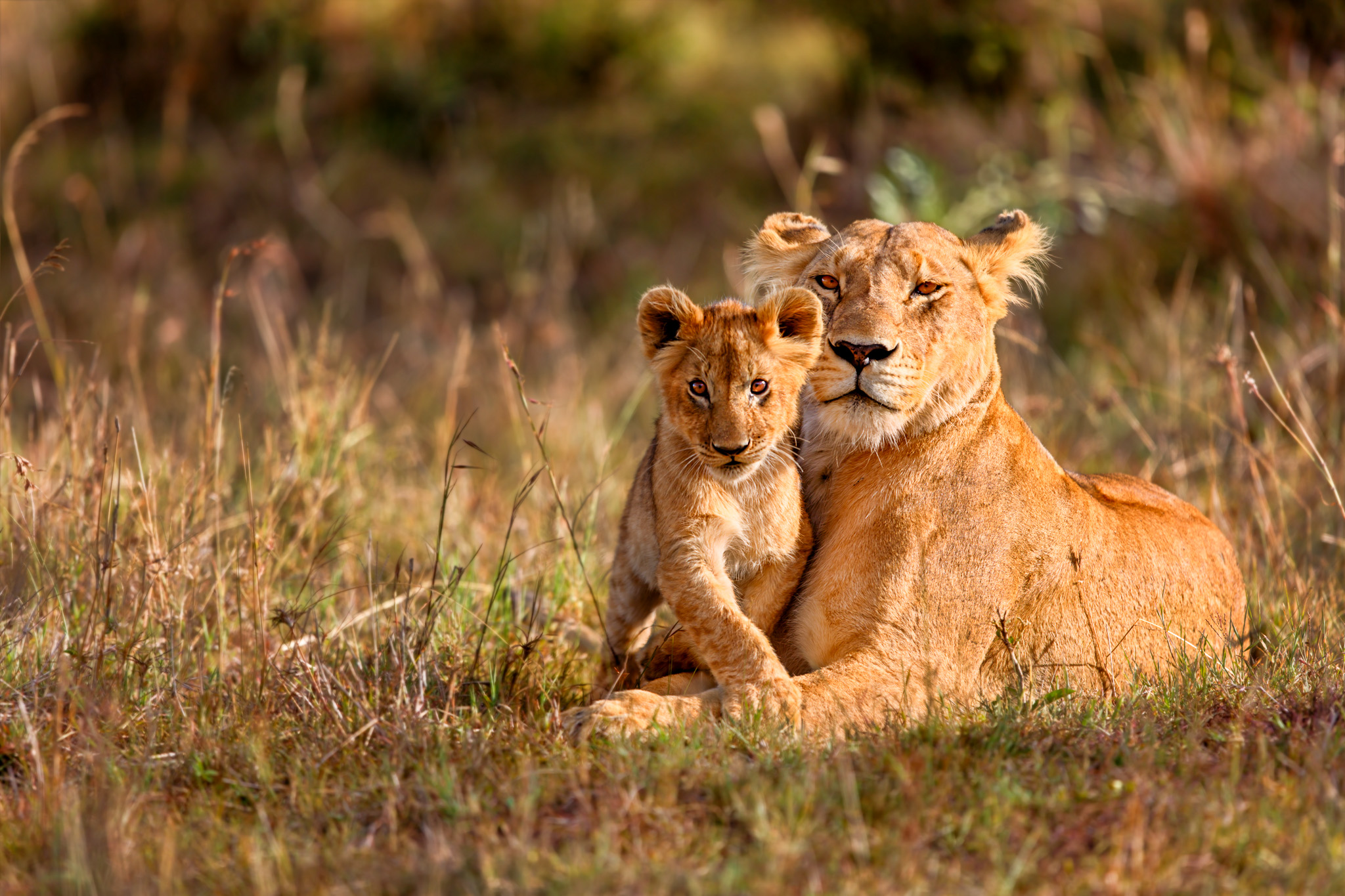
Lion mother of Notches Rongai Pride with cub in Masai Mara, Kenya
What does AWF’s research reveal about the impact of habitat fragmentation, prey depletion, and climate change on lion populations?
Ongoing research in Tsavo, led by a University of Wyoming PhD candidate, is exploring how these pressures affect lion survival. Meanwhile, data from Kidepo already show the devastating impact of habitat loss and snaring, with lion numbers falling by over 90% in just over a decade. This highlights how habitat degradation and non-target poaching methods like snares can severely undermine apex predator populations.
How have AWF interventions like lion-proof bomas helped demonstrate human-wildlife coexistence?
Lion-proof bomas (reinforced livestock enclosures), such as those installed at Manyara Ranch in Tanzania, have achieved a 99% success rate in preventing nocturnal lion attacks. Scaling such solutions, however, requires understanding local culture, livestock practices, and relationships with authorities. AWF emphasizes a political ecology lens to ensure that interventions are contextually appropriate and sustainable.
How does AWF integrate community knowledge, education, and social science into lion conservation?
AWF’s human-centered conservation model prioritizes community co-design and local knowledge integration. In Tsavo, for example, AWF collaborated with local communities to develop an illustrated, Swahili-language guide on livestock husbandry in 2019. This resource promotes best practices that help protect both livestock and lions, reinforcing community ownership of conservation outcomes.
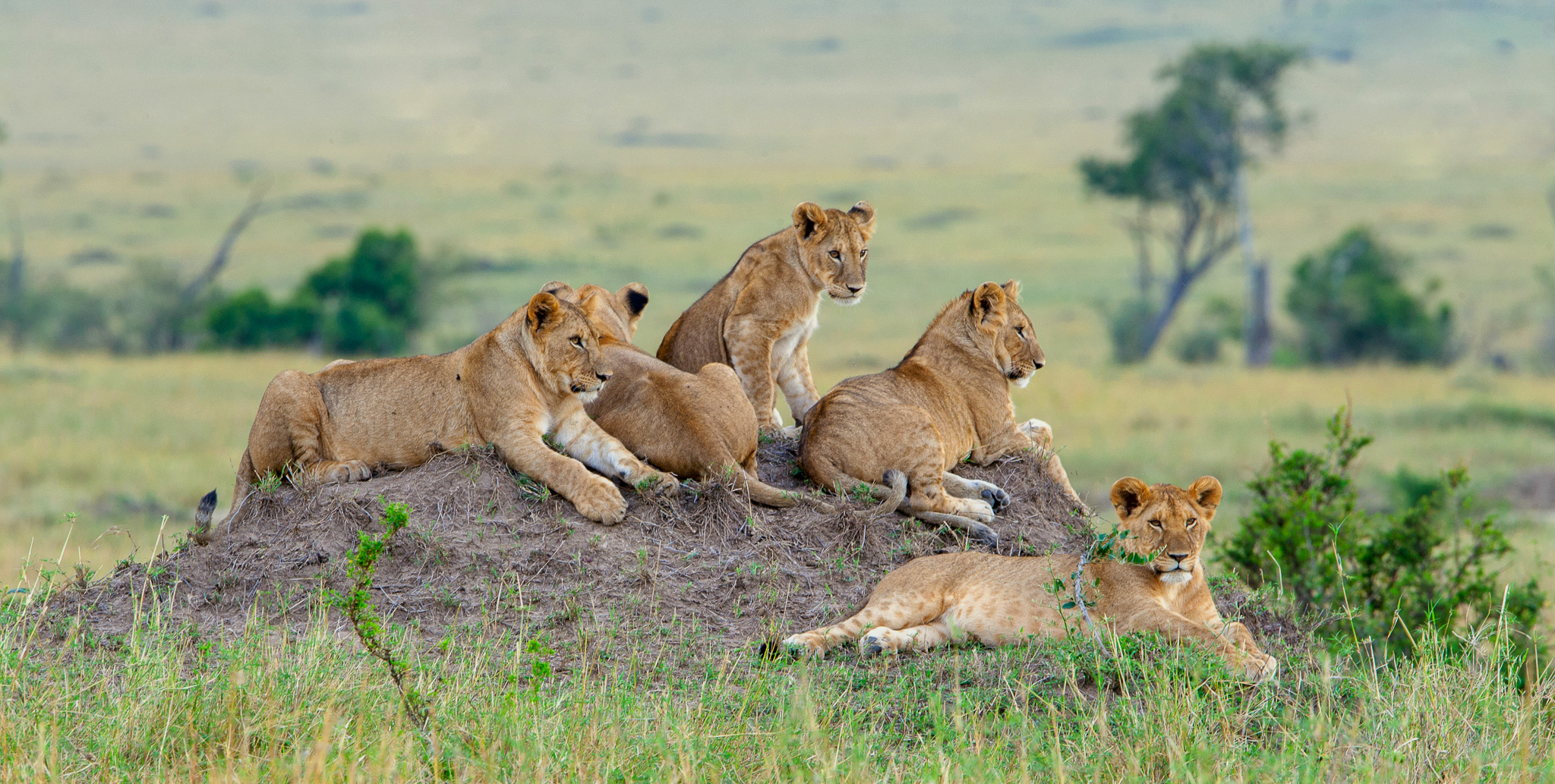
Group of young lions on the hill. The lion (Panthera leo nubica), known as the East African or Massai Lion
How does the concept of “lionscapes” guide AWF’s planning, and what are the ecological benefits?
AWF’s large landscape conservation model aligns with the idea of “lionscapes”—ecological areas that support viable lion populations and connectivity across fragmented habitats. These landscapes not only benefit lions but also enhance ecosystem services like seed dispersal, water regulation and carbon storage. Conserving lionscapes ensures biodiversity protection and supports the well-being of local communities who depend on healthy ecosystems.
What role does technology play in AWF’s lion conservation work?
AWF uses a suite of advanced technologies—such as camera traps, geofencing, eDNA, EarthRanger, and CyberTracker—to complement traditional field methods; for instance, geofencing allows real-time tracking of lion movements, helping communities adjust grazing patterns and avoid conflict, ultimately enhancing data collection, decision-making, and response times in lion conservation efforts.
How is AWF influencing conservation policy using scientific data and field learnings?
AWF leverages its research and field experience to inform conservation policies at local, national, and regional levels. Through its work in landscapes like Mid-Zambezi and Tsavo-Mkomazi, AWF contributes to transboundary conservation efforts and policy formulation. It has also played a key role in establishing influential platforms such as the African Protected Areas Directors (APAD) and the African CSOs Biodiversity Alliance (ACBA). These platforms champion community-led conservation and have been instrumental in shaping initiatives like the Kigali Call to Action, which promotes progressive conservation policies across the continent.
In Conclusion?
From science-driven monitoring in Kenya’s Tsavo to community-led deterrents in Zimbabwe’s Mid-Zambezi, AWF’s lion conservation approach is as dynamic and diverse as Africa’s landscapes. By combining innovative tools, local partnerships, and adaptive planning, AWF is helping ensure a future where lions and people thrive together.
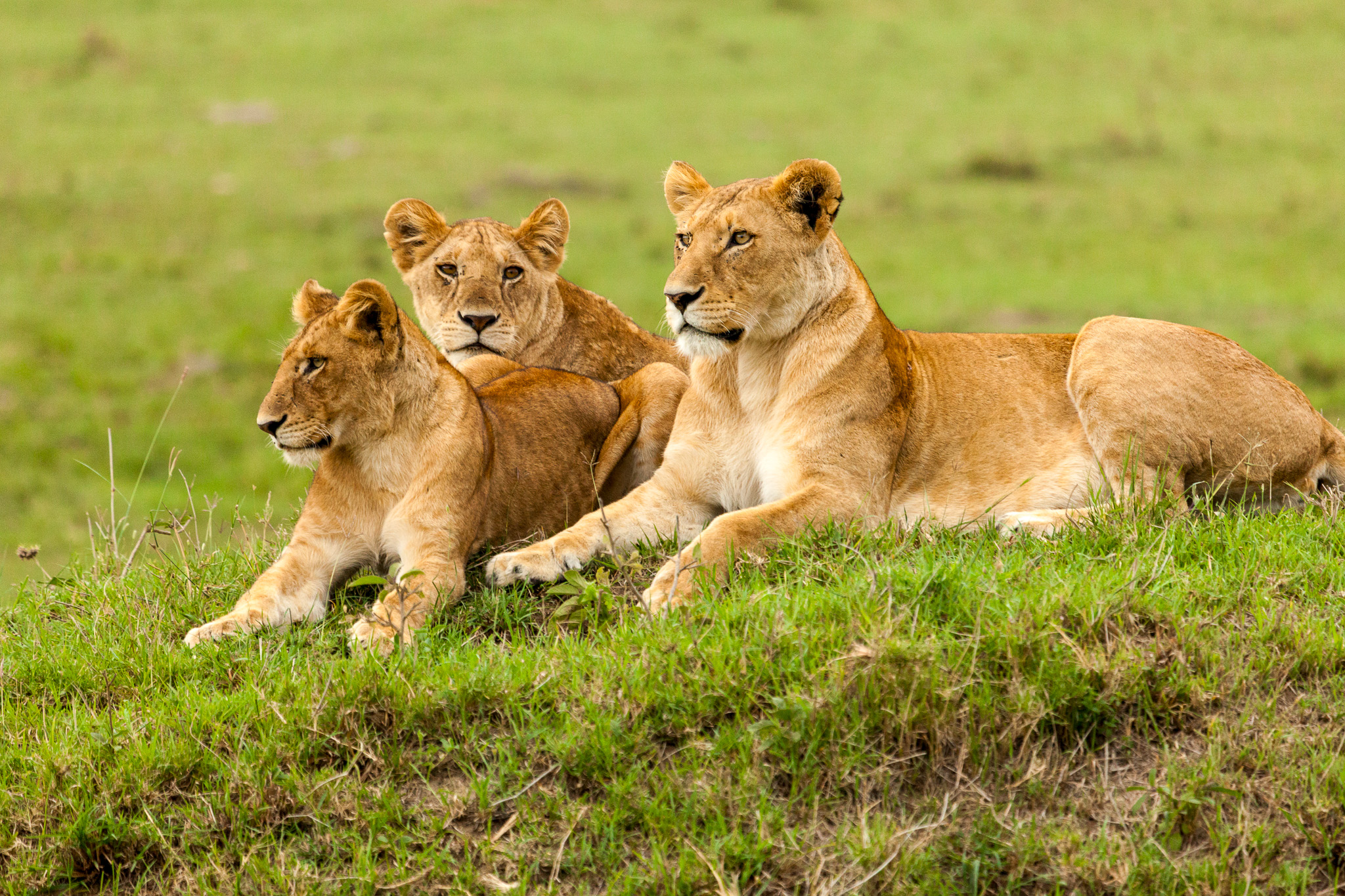
A pride of lions relaxing on the grasslands of the Maasai Mara